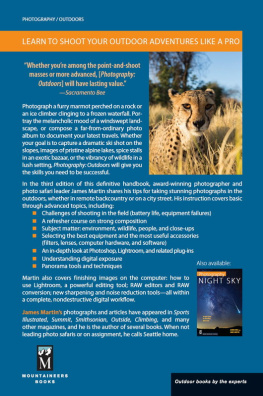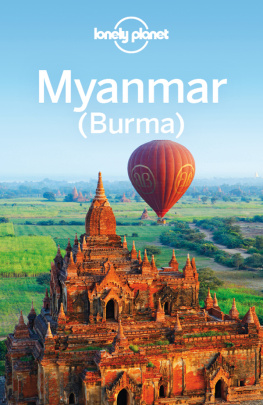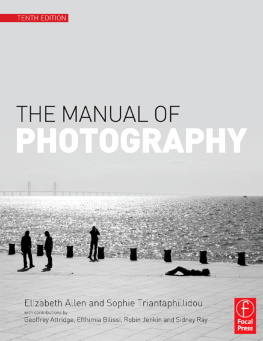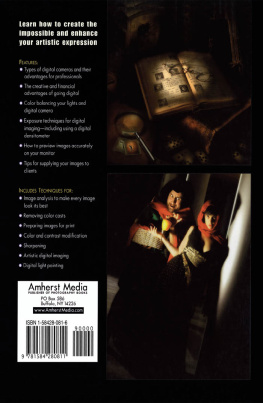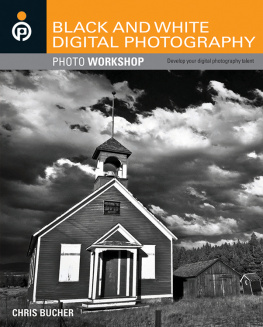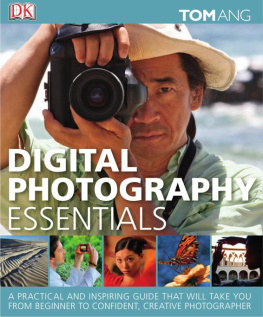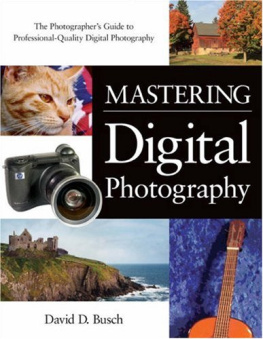Photography
OUTDOORS
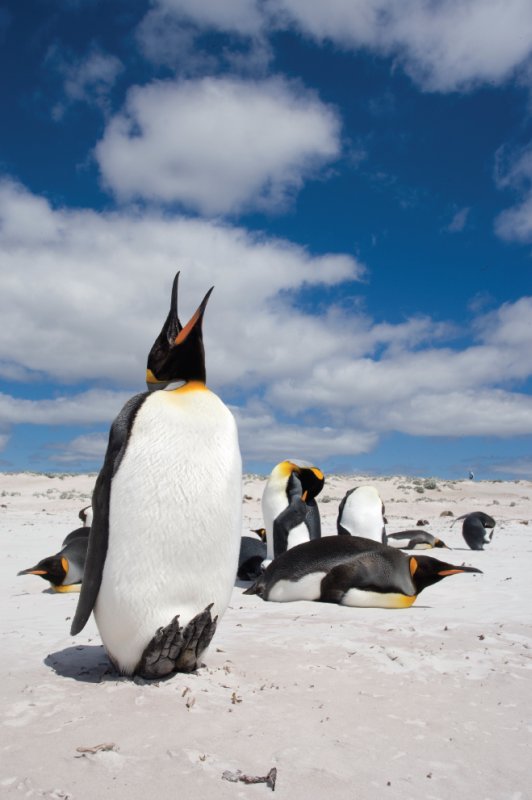
Photography
OUTDOORS
Third Edition
A Field Guide
for Travel and
Adventure
Photographers
JAMES MARTIN

 | Mountaineers Books is the publishing division of The Mountaineers, an organization founded in 1906 and dedicated to the exploration, preservation, and enjoyment of outdoor and wilderness areas. 1001 SW Klickitat Way, Suite 201 Seattle, WA 98134
800.553.4453 www.mountaineersbooks.org, |
Copyright 2014 James Martin
All rights reserved. No part of this book may be reproduced or utilized in any form, or by any electronic, mechanical, or other means, without the prior wwritten permission of the publisher.
Printed in China
Distributed in the United Kingdom by Cordee, www.cordee.co.uk
First edition, 2004. Second edition, 2007. Third edition, 2014.
Copy editor: Heath Lynn Silberfeld / enough said
Cover design and layout: Peggy Egerdahl
All photographs by the author unless otherwise noted.
Cover photograph: Mount Garibaldi and Garibaldi Lake, from Panorama Ridge, British Columbia
Frontispiece: A king penguin wakes from a nap.
Library of Congress Cataloging-in-Publication Data
Martin, James, 1950
[Digital photography outdoors]
Photography outdoors: a field guide for travel and adventure photographers / James Martin.Third edition.
pages cm
Revised edition of Digital photography outdoors / James Martin. 2007.
Includes index.
ISBN 978-1-59485-780-5 (pbk.)
1. Outdoor photography. 2. PhotographyDigital techniques. I. Title.
TR659.5.M27 2014
778.7'1dc23
2013033486
ISBN (paperback): 978-1-59485-780-5
ISBN (ebook): 978-1-59485-781-2
CONTENTS
FOREWORD
I met Jim Martin during a busmans holiday that Joe Van Os had arranged for his Photo Safari trip leaders, a weekend of photographing captive hawks, eagles, and owls in Colorado. I was shooting medium-format film, which delivers much greater resolution and richness than 35mm slide film. Medium format demands patience and care. Motor drives, when they are available, are slow, and even changing film takes more time. I often lose photo opportunities, especially with wildlife photography, but the impact of a magical moment caught on medium format more than makes up for the trouble. Unlike the rest of the trip leaders, Jim also shot medium format, so I suspected I had encountered a sympathetic soul.
My suspicions proved correct. Jim also sought the highest possible quality and went to great lengths to attain it. At the time he was working on a photo book about the North Cascades crest, carrying camping and climbing gear plus an assortment of medium-format camera equipment into high mountains. He crisscrossed trail-less terrain and camped on mountaintops over several summers to get the images he had in mind.
Over the years we traveled together to Africa and the Galpagos. When Jim visited my studio, I showed him my early work in Photoshop. I fed high-resolution scans into a computer before enhancing my photographs or creating fanciful images. (I think I can take credit for planting the notion of digitals potential in his mind in the early 1990s.)
On our trips, the conversation turned inevitably to photographic styles and techniques: improving image quality, innovative compositional styles, and the likely future of the medium. Both of us enjoy pushing the limits of our photographic visions, and our creative energy has always been stimulating and inspiring for each other.
In Photography: Outdoors I see that same passion for creating the best-quality image, both technically and artistically. This book reviews the essential precepts that digital and film photography share and then outlines the steps needed to draw the best out of digital while avoiding catastrophic errors. Its easy to send all those zeros and ones into the ozone with a misplaced keystroke, so heed the warnings scattered throughout this book. If you take Jims lessons to heart, not only will your photography improve but your files will be waiting for you where you left them, undamaged and properly cataloged. I consider the information contained in the following pages essential to getting the most out of your digital equipment as well as expanding your ability to create beautiful images.
Jim Zuckerman
Jim Zuckerman is a noted travel and stock photographer and the author of several books on photography, including Perfect Exposure: Jim Zuckermans Secrets to Great Photographs and Jim Zuckermans Secrets of Color in Photography. He teaches online classes for www.betterphoto.com.

Ceremony celebrating Magha Puja at Wat Phra Dhammakaya, Thailand
ACKNOWLEDGMENTS
I owe thanks to Scott Stulberg for reviewing the original manuscript, keeping me abreast of the latest whiz-bang features in Photoshop and its attendant plug-ins, and, most of all, encouraging me to take the plunge into the digital ocean. Jim Zuckerman introduced me to digital editing at the dawn of Photoshop and opened my eyes to the possibilities. Without Art Wolfes generous instruction, my photography would be weaker than it is and my storehouse of practical jokes and puns would be smaller. I reserve my greatest appreciation for my wife, Terrie, who puts up with a husband who spends an inordinate amount of time amusing himselfand even encourages him.
INTRODUCTION
When I was in high school, I used to hitchhike to Yosemite on weekends. I often saw Ansel Adams at work, unloading his car in front of Best Studios (now the Ansel Adams Gallery) or leading workshops. I eavesdropped on the workshops, trying to pick up tips. He saw me lurking but only smiled. His explanations of the Zone System could have been in Phoenician for all the good they did me, but I could follow his comments on light and composition. I tried to apply his lessons when I shot photographs in the mountains, and his principles informed my shooting, but I had no patience for darkroom work. A small, dark cubicle was the last place I wanted to spend my time. Since black-and-white photography requires facility in the darkroom, I drifted into color photography.
Years later, a magazine assignment for the Smithsonian Institution sent me to Africa with Art Wolfe, one of the worlds most prominent nature photographers. While we worked, he taught me the basics of his approach, and his instruction became the basis for my future shooting. Joining the crew at Joseph Van Os Photo Safaris brought me in contact with a diverse group of nature photographers, including John Shaw and Jim Zuckerman. While they agreed on the basics of photography, each employed a different way of seeing and working. World-renowned alpine climber Mark Twight introduced me to alternative films, processes, and perspectives.
GOING DIGITAL: THE EARLY YEARS
In the early 1990s, I visited Jim Zuckermans office. He scanned his 6x7-inch transparencies and then loaded these files onto two Macintosh Quadra computers connected to a stack of hard drives. Any command took a long time to execute. Rotating an image, which takes a fraction of a second these days, consumed about a minute. The system frequently crashed. Jim possesses a large measure of patience and determination, evidenced by the large number of manipulated images he had created. I was intrigued, but the expense (his collection of electronics totaled tens of thousands of dollars) and laborious demands of using early versions of Adobe Photoshop put me off. Even so, the magic Jim had produced attracted me.

